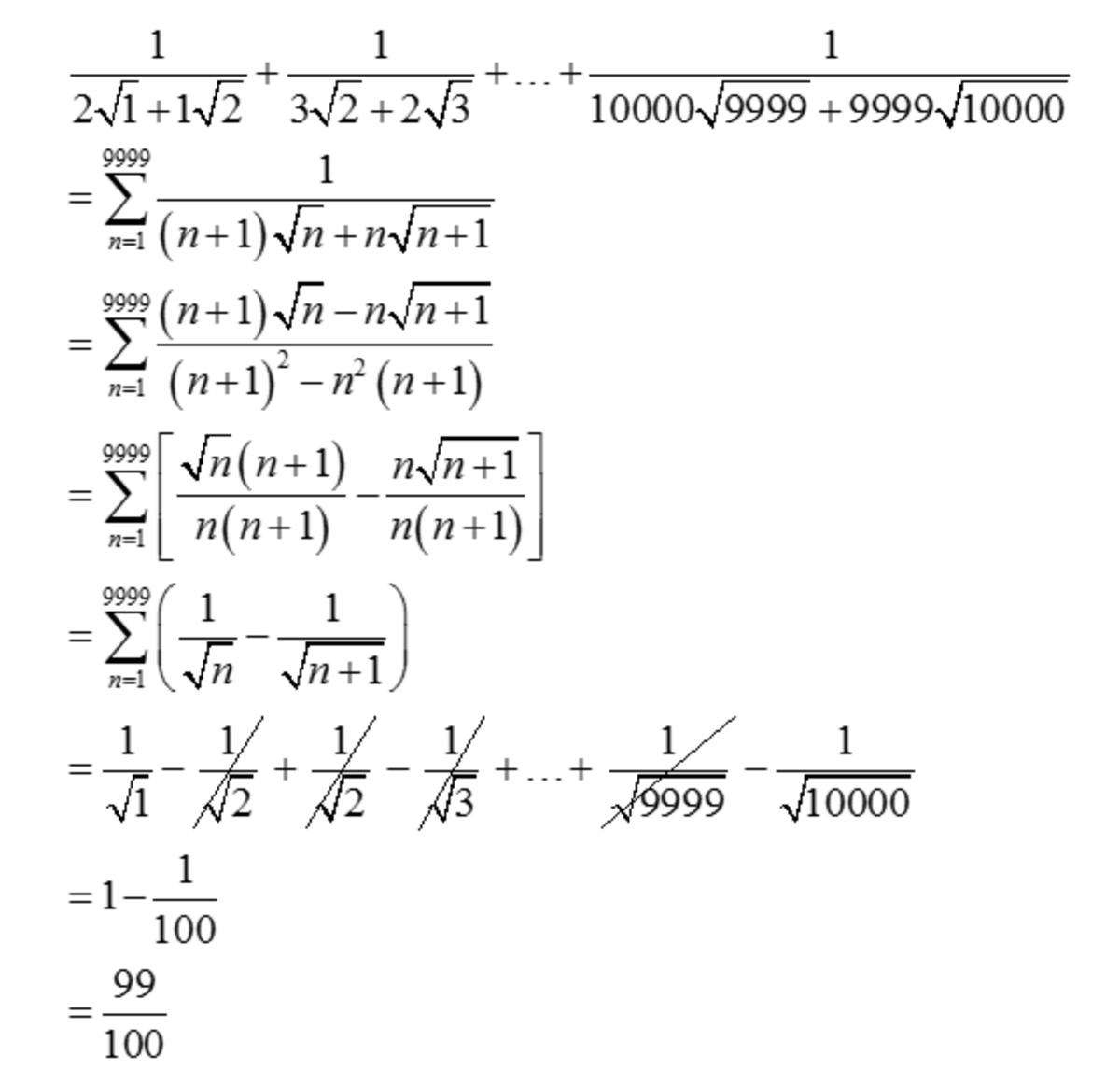Square roots galore
 Evaluate the following sum:
Evaluate the following sum:
1 × 2 + 2 × 1 1 + 2 × 3 + 3 × 2 1 + . . . + 9 9 9 9 × 1 0 0 0 0 + 1 0 0 0 0 × 9 9 9 9 1 .
The answer is 0.99.
This section requires Javascript.
You are seeing this because something didn't load right. We suggest you, (a) try
refreshing the page, (b) enabling javascript if it is disabled on your browser and,
finally, (c)
loading the
non-javascript version of this page
. We're sorry about the hassle.
5 solutions
Note that when you type 1 . 2 , the "." is extremely misleading. While there is slight context that it should not be interpreted as a decimal point, some people may think it is 1 . 2 . It is better to use \cdot or \times, which gives ⋅ or × respectively.
Log in to reply
The \cdot still looks too much like a period. To illustrate that it is actually not a period, I put it in between two numbers: 1 ⋅ 2
Log in to reply
If you are referring to my comment, those are actually periods, to reinforce my point. I didn't show \cdot ⋅ , because I generally prefer using \times ( × ), and I updated the problem statement accordingly (but not his solution).
Great !
Lol I got 99
good explanation
great
who invent maths?
0.99
Why u subtracting from 1...??
Why subtracting from 1??.
WRITE BACK THE EQUATION AS IN (1/K) +(1/(K+1)) FORM TO MAKE IT TELESCOPING SERIES, AND SUMMATION OF TELESCOPING SERIES IS UNITY
1 2 3 4 5 |
|
take first term which is equal to 1/sqrt of 1- 1/sqrt of 2 , same as second term is 1/sqrt of 2-1/sqrt of 3 and so on. therefore finally we get 1/sqrt of 1-1/sqrt of 10000= 0.99


Let a n = ( n + 1 ) n + n n + 1 1 . Then the sum we are looking for is equal to n = 1 ∑ 9 9 9 9 a n . We can express a n as n . ( n + 1 ) . ( n + n + 1 ) 1 .Then, multiplying the numerator and denominator by n + 1 − n we would get a n = n . ( n + 1 ) n + 1 − n = n 1 − n + 1 1 .So our series telescopes and our answer is 1 − 1 0 0 0 0 1 = 0 , 9 9
P.S.:Thank you Calvin for correcting the problem and adding a picture to it :D